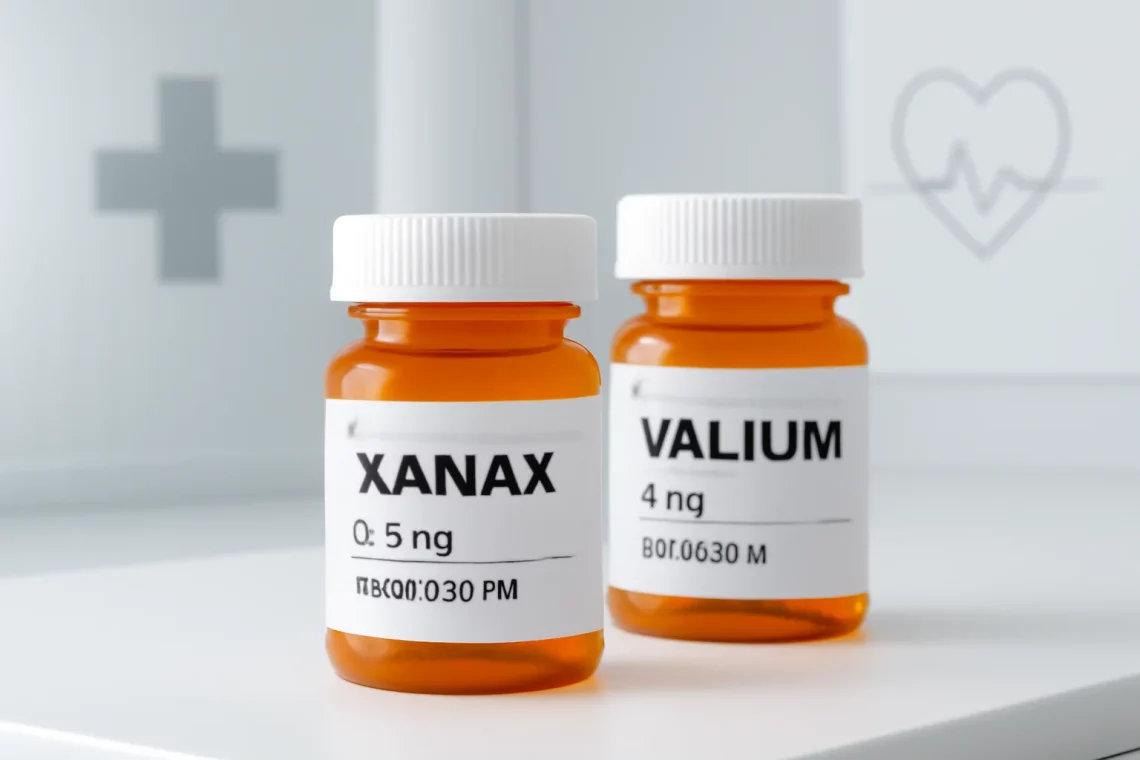
Xanax vs Valium: Understanding the Differences and Uses
The use of benzodiazepines has become increasingly prevalent in modern medicine, particularly for the treatment of anxiety and panic disorders. Two of the most commonly prescribed medications in this category are Xanax and Valium. Both of these drugs are known for their effectiveness in alleviating symptoms of anxiety, but they possess unique properties that set them apart. As the understanding of mental health continues to evolve, it is essential to examine these medications closely to determine which may be more appropriate for various conditions.
In the realm of mental health treatment, the importance of medication cannot be overstated. Patients often seek relief from overwhelming feelings of anxiety, panic, or stress, leading them to explore pharmaceutical options. However, with the plethora of choices available, including Xanax and Valium, understanding the differences between these medications is crucial. The choice between them can be influenced by various factors, such as the specific nature of the anxiety disorder, the individual patient’s health history, and the potential for dependence or side effects.
In this article, we will delve into the characteristics of Xanax and Valium, focusing on their uses, effects, and potential risks. By highlighting their differences and similarities, we aim to provide a clearer perspective on each medication, aiding patients and healthcare providers in making informed decisions regarding treatment options.
Understanding Xanax: Uses and Effects
Xanax, the brand name for alprazolam, belongs to the benzodiazepine class of medications and is frequently prescribed for anxiety disorders and panic attacks. It works by enhancing the effects of a neurotransmitter called gamma-aminobutyric acid (GABA) in the brain, which helps to produce a calming effect. This makes Xanax effective in reducing anxiety symptoms quickly, often providing relief within a matter of hours.
Patients who are prescribed Xanax usually experience a reduction in feelings of nervousness, restlessness, and anxiety. The medication is known for its fast-acting properties, making it a popular choice for those who need immediate relief from anxiety symptoms. Xanax is often taken as needed, rather than on a strict schedule, which can be beneficial for individuals who experience situational anxiety or panic attacks.
However, while Xanax can be highly effective, it also comes with a range of potential side effects. Common side effects include drowsiness, dizziness, and fatigue. More severe side effects can occur, particularly when the medication is misused or taken in higher doses than prescribed. Dependence and withdrawal symptoms are significant concerns with Xanax, as individuals may develop a tolerance over time, requiring higher doses to achieve the same effect.
It is also worth noting that Xanax has the potential for abuse. Due to its sedative properties, some individuals may misuse the medication for recreational purposes, leading to serious health risks. For this reason, it is essential that Xanax is prescribed and monitored by a healthcare professional, ensuring that patients receive the appropriate dosage and frequency to minimize risks.
Valium: A Closer Look at Its Uses and Effects
Valium, or diazepam, is another well-known benzodiazepine that has been used for decades in the treatment of anxiety, muscle spasms, and seizures. Similar to Xanax, Valium works by enhancing GABA activity in the brain, promoting relaxation and reducing feelings of anxiety. However, Valium has a longer half-life compared to Xanax, meaning it remains in the body for a more extended period, allowing for a steadier effect over time.
Valium is often prescribed for various conditions, including generalized anxiety disorder, alcohol withdrawal symptoms, and muscle spasms. Because of its longer duration of action, Valium may be taken on a more regular schedule, providing consistent relief for patients who struggle with chronic anxiety. This can be particularly advantageous for individuals who experience anxiety on a daily basis, as it helps maintain a stable level of medication in their system.
Despite its effectiveness, Valium is not without its side effects. Commonly reported side effects include drowsiness, fatigue, and dizziness, similar to those experienced with Xanax. Additionally, as with many benzodiazepines, the potential for dependence and withdrawal symptoms exists. Patients who have been on Valium for an extended period may find it challenging to discontinue use without experiencing withdrawal effects.
It is also essential for healthcare providers to assess each patient’s individual needs and medical history when prescribing Valium. Due to its potential for misuse and dependence, monitoring and follow-up appointments are crucial to ensure the medication is being used safely and effectively.
Xanax vs. Valium: Key Differences and Considerations
When comparing Xanax and Valium, several key differences emerge that can influence a healthcare provider’s prescribing decision. One of the most significant differences is the duration of action. Xanax is a short-acting medication, making it ideal for acute anxiety episodes, while Valium’s longer half-life allows for more sustained relief. This distinction is crucial for patients who require immediate relief versus those who need ongoing treatment.
Another important consideration is the onset of action. Xanax typically produces effects more quickly than Valium, which may take longer to reach its peak effectiveness. This can be beneficial for individuals who experience sudden panic attacks or anxiety spikes, as Xanax can provide rapid relief. In contrast, Valium’s gradual onset may be more suitable for patients seeking continuous management of anxiety symptoms.
The potential for side effects and dependence is also a critical factor in the comparison between these two medications. Both Xanax and Valium share similar side effects, but the risk of developing a dependence can vary based on usage patterns and individual patient characteristics. Xanax, with its more potent and rapid effects, may carry a higher risk of misuse among certain populations.
Ultimately, the choice between Xanax and Valium should be guided by a comprehensive evaluation of the patient’s specific needs, preferences, and medical history. It is essential for healthcare providers to discuss the benefits and risks of each medication with their patients, ensuring that they are well-informed and actively participating in their treatment plan.
Potential Risks and Side Effects
Both Xanax and Valium come with a range of potential risks and side effects that patients should be aware of before starting treatment. While these medications can be effective for managing anxiety, it is crucial to understand the implications of their use.
Common side effects experienced by both Xanax and Valium users include drowsiness, dizziness, and cognitive impairment. These side effects can impact daily activities, making it essential for individuals to assess their tolerance to the medication before engaging in tasks that require full attention, such as driving or operating machinery.
More severe side effects can occur, including confusion, memory problems, and changes in mood. In some cases, individuals may experience paradoxical reactions, where anxiety or aggression may increase instead of decrease. This underscores the importance of close monitoring by healthcare providers, particularly during the initial stages of treatment or when adjusting dosages.
Additionally, the risk of dependence and withdrawal symptoms is a significant concern for both medications. Patients who have been on benzodiazepines for extended periods may find it challenging to discontinue use without experiencing withdrawal effects, which can include increased anxiety, tremors, and even seizures in severe cases. Tapering off the medication under a healthcare provider’s guidance is often recommended to minimize these risks.
It is also important to note that both Xanax and Valium can interact with other medications, leading to increased sedation or other adverse effects. Patients should inform their healthcare providers about all medications they are taking, including over-the-counter drugs and supplements, to avoid harmful interactions.
In conclusion, while Xanax and Valium can be effective treatments for anxiety, they are not without risks. Understanding the potential side effects and the importance of proper medical supervision is essential for anyone considering these medications as part of their treatment plan.
**Disclaimer:** This article is for informational purposes only and should not be considered medical advice. Always consult with a healthcare professional before starting or stopping any medication.




